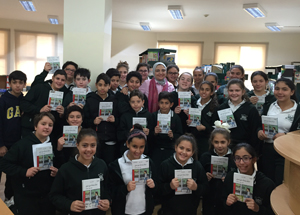 Although many insist on blaming some children’s disinterest in reading primarily on the distractions caused by electronic gadgets in their lives, a child who finds it difficult to read is unlikely to pick up a book and read it, gadgets or no.
Although many insist on blaming some children’s disinterest in reading primarily on the distractions caused by electronic gadgets in their lives, a child who finds it difficult to read is unlikely to pick up a book and read it, gadgets or no.
By the end of the third grade, students are expected to be able to read independently and proficiently. However, current indicators in fluency and comprehension are extremely low in many parts of the world, and a vast number of children are embarking on their fourth-grade journey while struggling with the most important skill needed for academic success.
The struggle in reading and the reluctance to read are strongly connected. The Young Adult Library Services Association (YALSA), a division of the American Library Association (ALA), defines the reluctant reader as “the teenager who, for whatever reason, does not like to read.” I took the liberty to extend this definition to include the children of 9 years old and above, because this is the age when they are supposed to be proficient in reading and may not be. Here, we find a vicious circle in which struggling readers become reluctant readers that don’t improve their proficiency and on and on. We learn reading by reading, and we will enjoy it more when we are better at it.
Addressing this issue has become a matter of priority for policymakers, educators, and publishers. Many approaches include the use of technology to encourage reading; however, the production of new, innovative, and diverse reading programs is an urgent necessity.
I have struggled to find fun fictional reading material for children over the third grade threshold in Arabic, both as a bookstore owner and as a mother. During the past decade, production of Arabic picture books has experienced relative growth, though it is still modest and lacks diversity. The young adult genre has always benefitted from classic literature written for adults. Nevertheless, the tweens arena is sorely lacking, filled mostly with translations and sporadic original attempts. So I decided to write for tweens, and I was determined to write a series. I learned from my childhood experience that if readers like a title in a series, they will look for the next one.
The idea of writing a series fascinated me. It meant creating long-term characters with many stories, a variety of experiences, and a diversity of themes.
Soon after the launch of the Hind and Saif series, I was invited to schools to meet students, many of whom were reluctant and struggling readers. Talking to students firsthand was priceless and rewarding and made me realize that I created a special niche through which I could offer my young readers an enchanting reading experience that they will seek to repeat outside the classroom, transcending any academic obligation. Such experiences are the first steps towards creating readers—lifelong readers—and thus breaking the vicious cycle of reading reluctance.
Flora Majdalawi, an ILA member, is an Arabic children’s author and publisher. For 10 years she has focused on producing fiction and nonfiction literacy resources for primary students. She has authored more than 20 titles in the differentiated graded Arabic reading series Discover the Fun of Reading. She is also the author of the tweens realistic fiction series Hind and Saif.